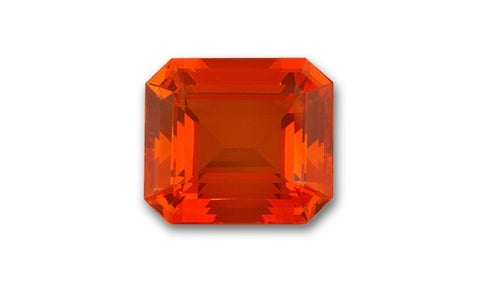I have been in love with colored gems for years but appreciation of precious opal, especially black opal, has come later in my career. I always skipped past October's birthstone mostly because I did not have confidence that I understood its value sufficiently to present it. Opal is a highly nuanced gem and I was intimidated by its complexity. Not surprisingly, the opal suppliers deal only in opal, whereas in most other gems such as sapphire, suppliers will represent many different gems.
After studying and spendings countless hours with experts in the field and most important of all, looking and comparing hundreds of opals, I am now obsessed. I want to share this amazing natural wonder with you in a series of blogs. My hope is to get you as interested and as excited as I am!
The purpose of this first installment is to lay some general groundwork essential to understanding this unique gem. Additional installments will feature the crazy world of opal mining, sources, and specific varieties.


Photo of Precious opal
Opals are an extremely complex gem with no two being exactly alike. The term opal refers to two general groups: common and precious. The most striking feature of precious opal is the incredible display of light. Common opal does not have this spectral display so is not nearly as interesting. Precious opal occurs in many forms— the most well known are black, boulder, crystal, water, light , yowah-nut and fire opal.
Since Opals are relatively soft, 5.0-6.5 on the Mohs scale of hardness, they are best suited for necklaces, earrings and special occasion rings or bracelets.

 Photo of Black Opal
Photo of Black Opal Photo of Boulder Opal
Photo of Boulder Opal

Although there have been debates on the certainty of its origins, various words that may have been referring to opal have been discovered since ancient times across many cultures. However, Hungary was the first documented commercial supplier of a light opal variety to the old world prior to the discovery of opal deposits in Australia in the mid-late 19th century.
Hungarian opal enjoyed success for a couple hundred years and was even included in the collection of Queen Victoria. Then, prices plummeted after the first book of the trilogy published in 1829 by Sir Walter Scott. A character in the story, Lady Hermione, died after her opal was destroyed by a drop of holy water. Just like that, opals became with bad luck, talk about an influencer! Opal did not yet gain popularity again until the striking material began circulating from he new mines in Australia some 50 years later.
Everything about opal is fascinating—it’s history, mineralogy, formation and mining. For example, opal consists of the elements silica and oxygen, the two most abundant elements on earth. Opal's chemical formula is SiO₂·nH₂O which tells us that these common elements combine with water in variable concentrations and, if conditions are right, and time is available, the result is an infinite variation of effects—this is why each opal is one of a kind. These proper geologic conditions are not widespread and include Australia, Mexico, Honduras, Ethiopia, United States and Brazil.
Common elements + water + strict conditions + time = precious opal
Opal is not actually a mineral but considered a mineraloid. A mineraloid is similar to a mineral in appearance but does not demonstrate crystallinity and is amorphous which means it does not have an ordered atomic structure like a mineral. Other mineraloids that you may be familiar with are pearls and amber.
Another interesting fact about opal compared to other gemstones: Opal is geologically young as it forms much later than the host rock and it referred to as a secondary mineraloid. All other gems form at the same time as the surrounding rock.
Opal is characterized by 2 things--body color and play of color. Body color is a chemical phenomena and is caused by trace impurities. Body color can be red such as in fire opal, black as in black opal and clear as in crystal opal. The play of color is the “personality" of opal and is the result of structural formation and is described in terms such as "pin fire", “straw”, “rolling flash" and “harlequin.”’
Learning about new gemstones has always fascinated me and I can’t wait to share with you what makes opals so spectacular. Creating classic, one-of-a-kind jewelry is our specialty and what better to do it with than a beautiful, rare and exotic opal! Stay tuned for future installments and design ideas for your next show-stopping piece from Susan L. Kottemann, INC.


